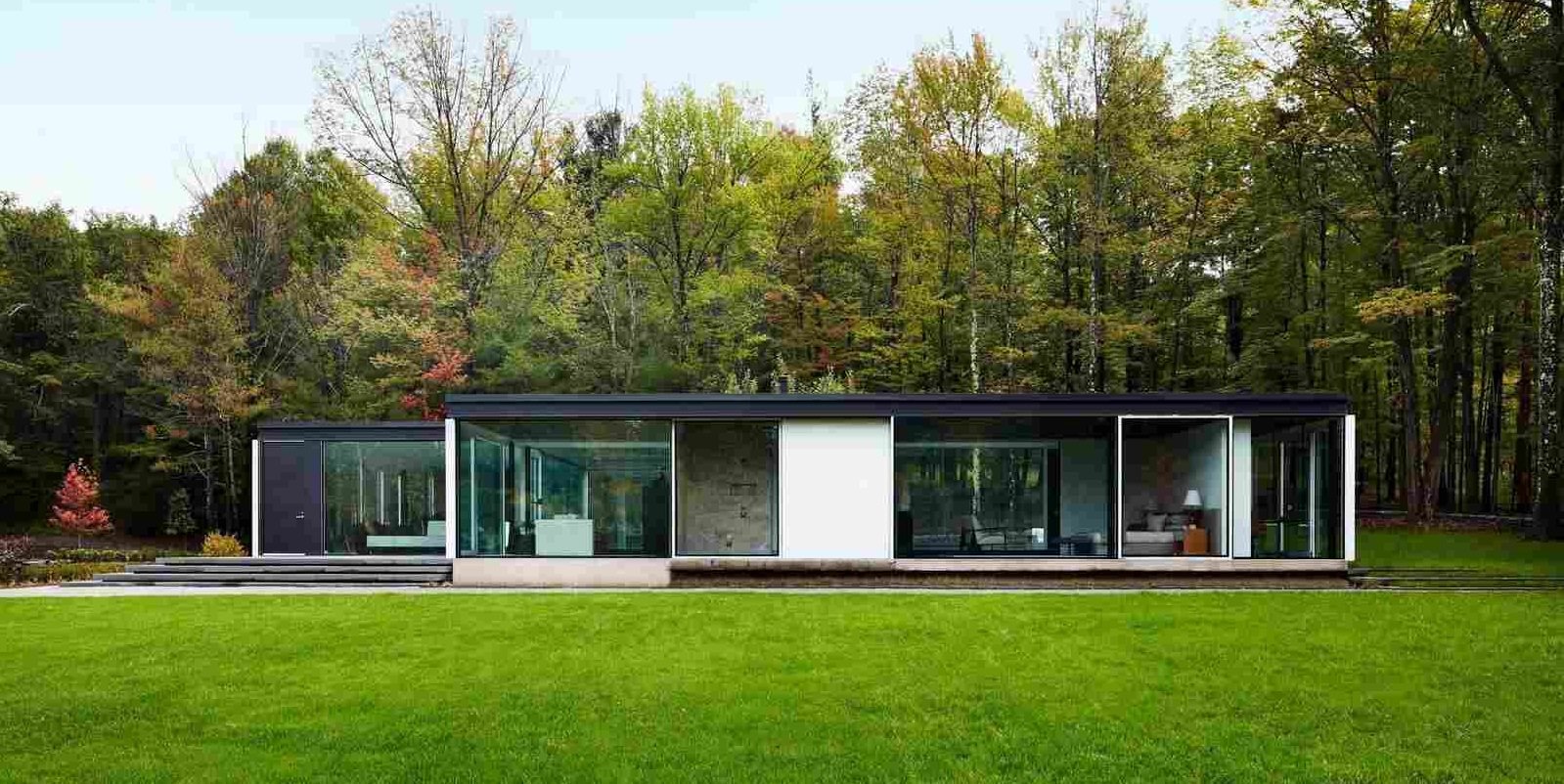#10632. Transparent Façade: Minimalist Glass Pavilion in the Forest
This minimalist house represents an impeccable example of modernist architecture, harmoniously integrated into its natural context. The horizontal volume with a flat roof creates an expressive contrast with the vertical lines of the surrounding forest. The façade is designed as a "glass pavilion" concept – an elongated rectangular structure with abundant glazing that creates a sense of transparency and connection with nature.
The composition of the façade is built on a clear rhythm of black structural elements and transparent glass surfaces, interspersed with opaque white and gray panels. The central portion with stone texture creates an anchor point, visually dividing the space and adding tactility to the overall composition. The low profile of the building emphasizes horizontality, while the clean lines of the frames enhance the geometric purity of the entire project.
When designing your own façade, several key techniques can be borrowed: the use of contrasting materials (glass, stone, metal), playing with transparency to create a connection between interior and exterior, and working with simple geometric forms to achieve a contemporary aesthetic. It's also important to consider the surrounding landscape, as done here – the house doesn't compete with nature but becomes an elegant frame for observing it.
